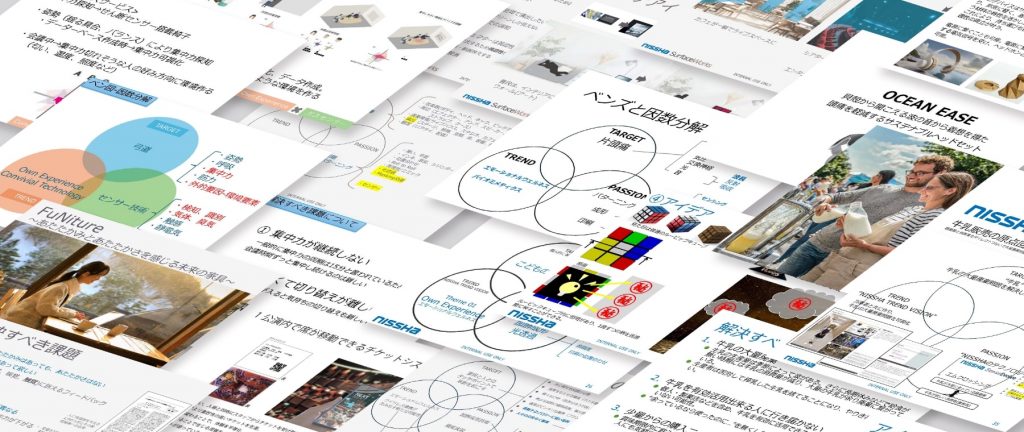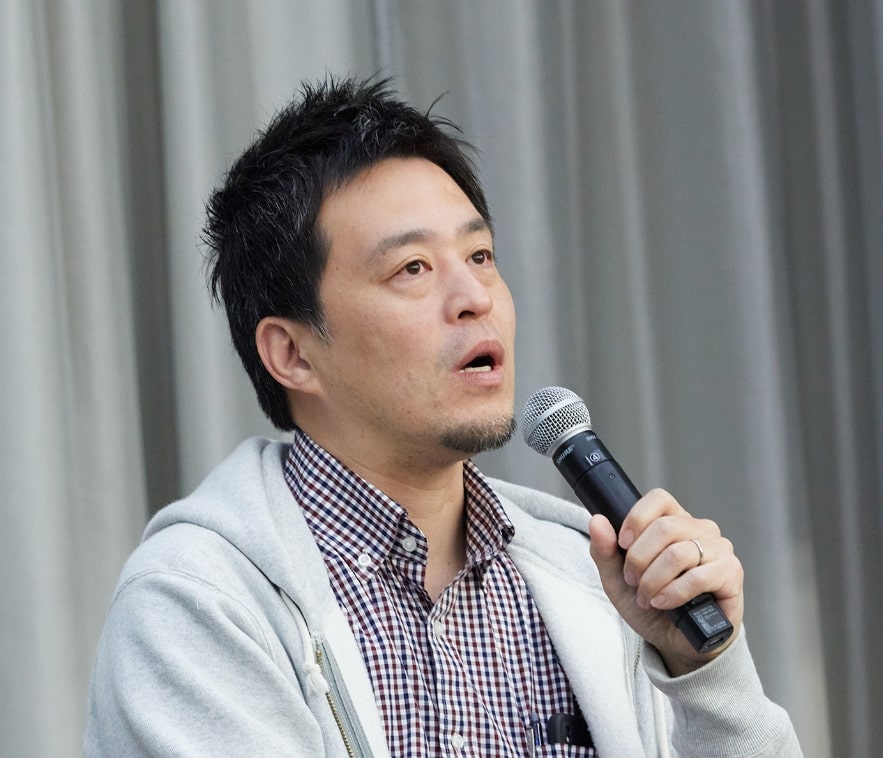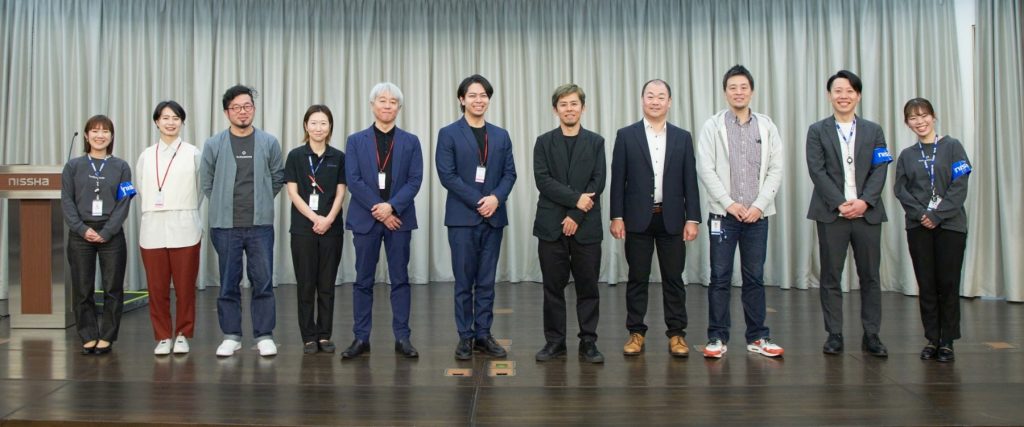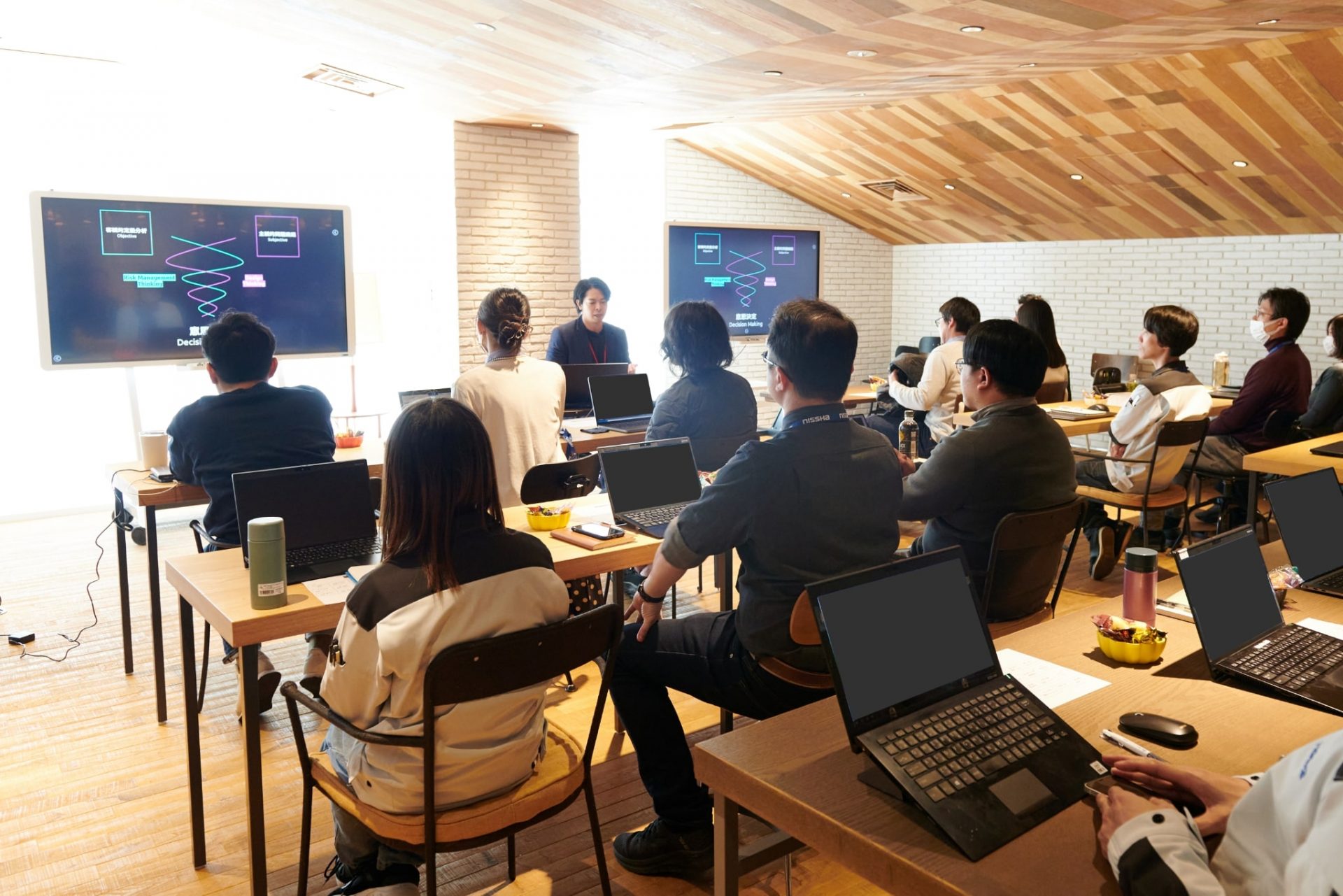In the first part of the forum, we invited Taro KAGAMI, CEO of SEN Co., Ltd., as a lecturer and held an internal workshop hosted by the Design & CMF Group that incorporated the concept of “Speculative Design.” In this second part of the report, we will review the contents of the two-day workshop held in March and continue the discussion from the forum.
Reconsidering Nissha’s Identity
As a company grows and matures, there are moments when products and technologies that have become so deeply ingrained within the company that they no longer feel novel are highly sought after by people from different fields or perspectives. Kagami says that these moments can provide hints for innovation.
Kagami: Identity needs to be considered from both internal and external perspectives. For example, architect Frank Gehry discovered a new way of expressing architecture by incorporating techniques for creating curved surfaces, which were common in shipbuilding, into his designs. This process is an external approach. On the other hand, the workshop we conducted this time allowed everyone within the company to recognize what they perceive as their identity in a meta way.
The Idea Generation Process in the Workshop

①TARGET (What you want to innovate)
②TREND (Current trends)
③PASSION (What you are passionate about)
Using a Venn diagram, we swapped ① and ② this time, placing the team members’ hobbies and interests in ①, one theme from the Nissha Trend Vision in ②, and Nissha’s technology in ③. We then abstracted the elements of the keywords in each category and combined them to think about the issues to be solved and generate new business ideas.

From the seven groups, unique ideas reflecting our company’s technology and current trends were presented; such as:
– Smart furniture that actually warms up using embedded heater technology, targeting “wooden furniture.”
– A ticket system that uses AR technology to allow seat changes before and during intermissions, targeting “theater viewing.”
– A headset that alleviates headaches using patterning and decorative molding technology, targeting “migraines.”
– Solutions to solve mass milk disposal using touch sensors and molding technology, targeting “milk.”
Kagami: The workshop was on a limited schedule, so there was no time to refine each idea, but most of the ideas included sensing technology. While it’s not definitive, technologies that were widely used are perceived internally as core technologies for the future, while those that were rarely mentioned might not exist in 30 years.

Sasaki: Looking at the presentations from the workshop, it seemed like discussions went beyond the brand’s boundaries. I believe this is the “ability to see.” When people from completely different fields look at our core technologies, what do they think? Promoting communication across business areas and borders can create new value. I also suffer from migraines, so I found that idea interesting.
Okamoto: Hearing the idea about milk sales, I learned for the first time that such a social issue exists. When focusing on social issues and combining them with our technology, I felt that we could consider “manufacturing” from a different approach than before.

Koji OKAMOTO, Director (Development Department, Devices Business Unit)

Jun SASAKI, Director (Development Section 1, Industrial Materials Business Unit)
Kagami: When a new idea emerges, it is important to value the speed of prototyping with a small start. Recently, there are marketing methods where IP is acquired and released to the world to see the reactions of potential end-users. In our relationship with society, it’s important to show the vision and future that we gather around, not just the extensions of what we can do now.
This forum, which provided an opportunity to reconsider the value of “SurfaceWorks” from the vision of what kind of brand we want to be in 20 or 30 years, made us realize that by fostering a climate for good questions to emerge, we can build new collaborative relationships with clients and end-users and create the future we want.

If you are interested in Nissha SurfaceWorks initiatives or business partnerships, please feel free to contact us.


